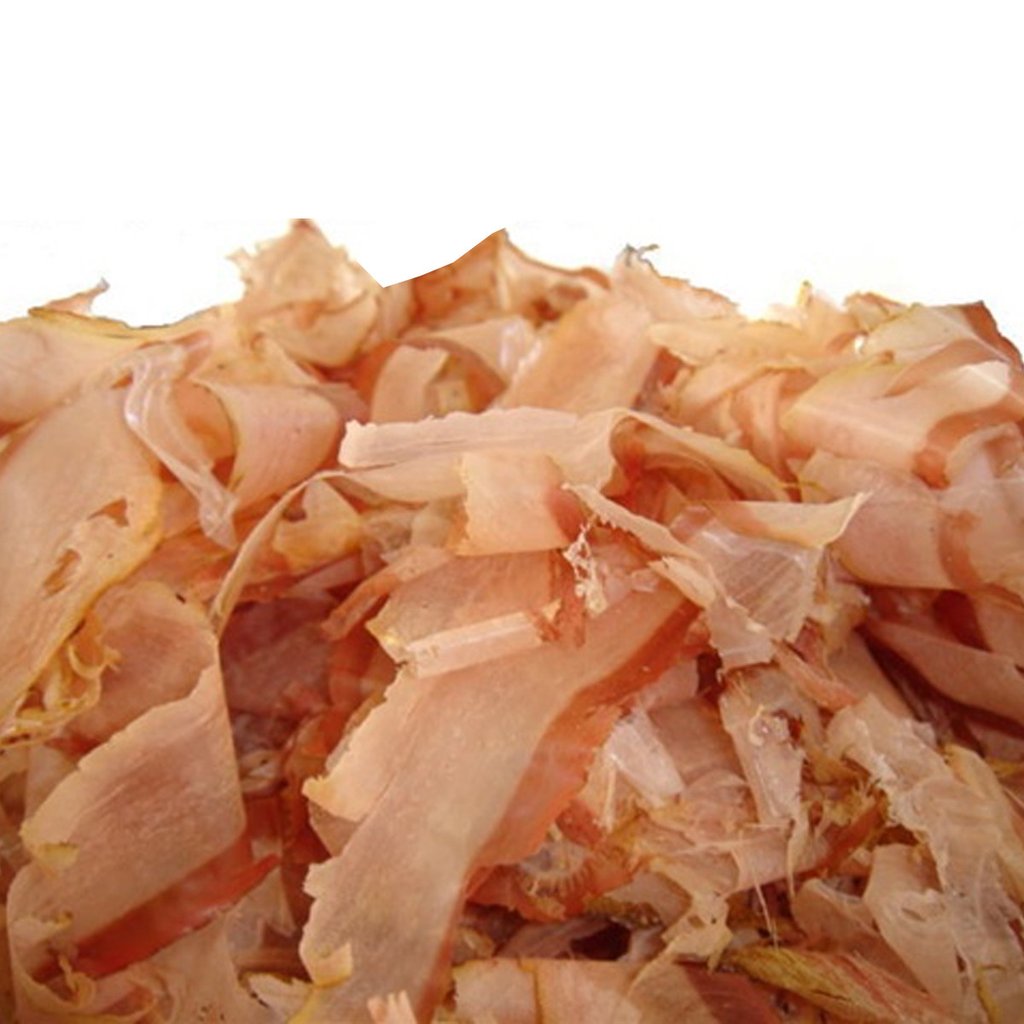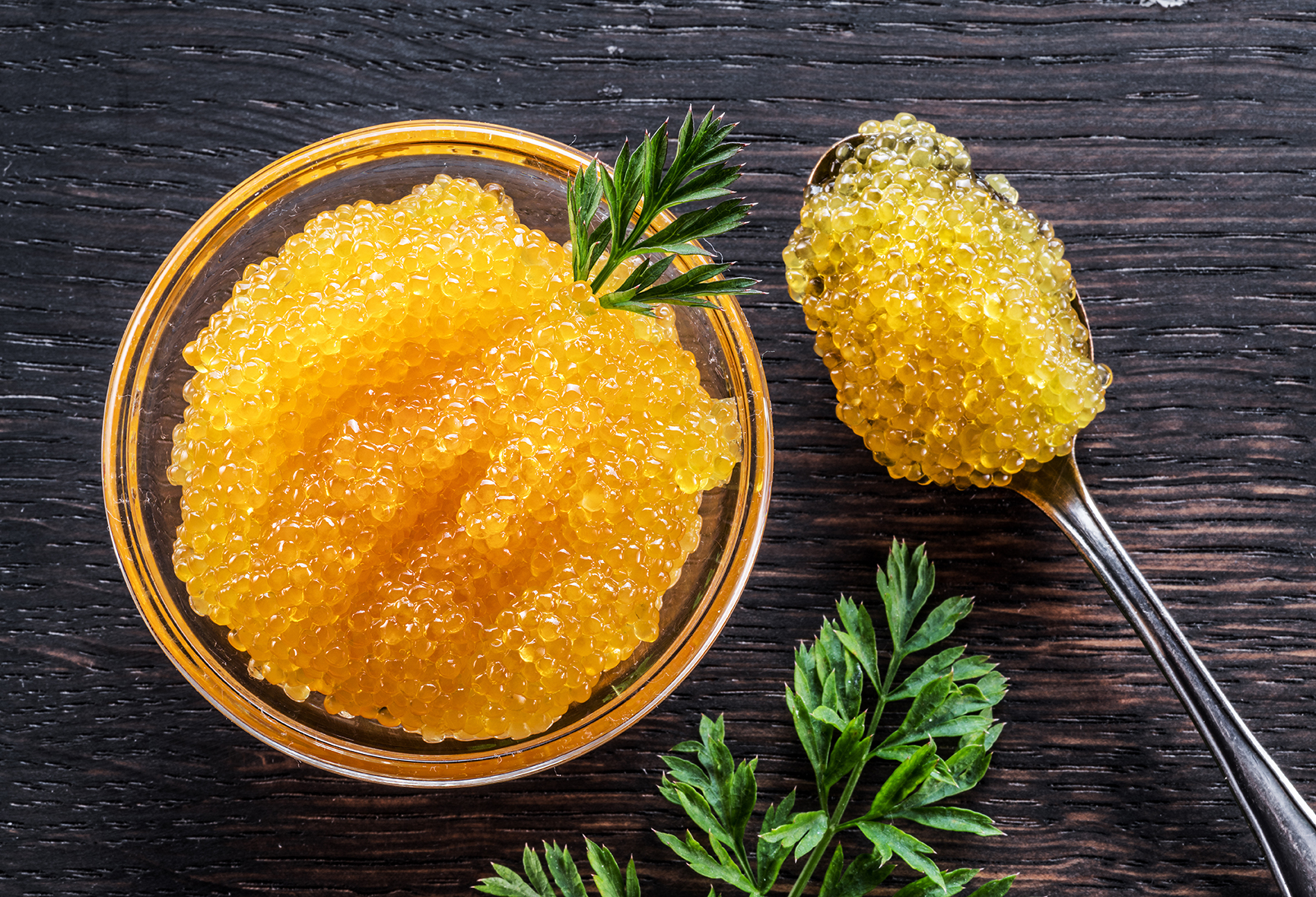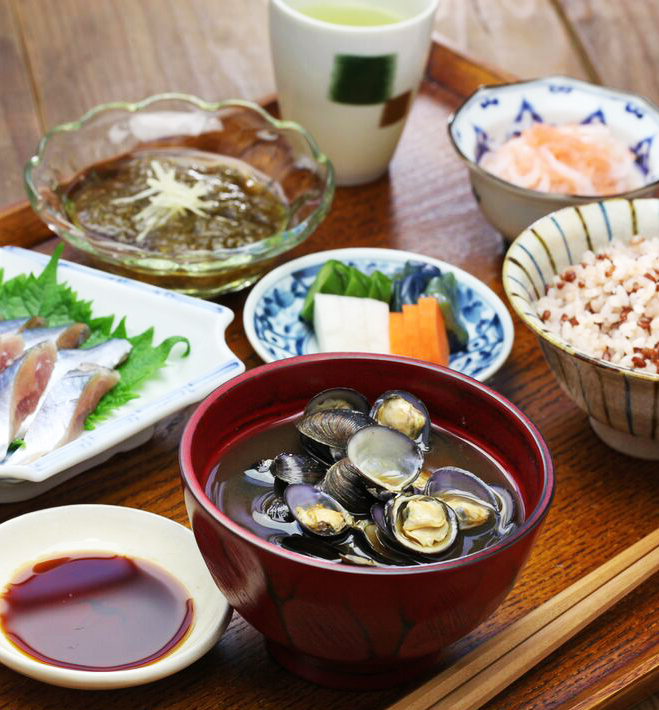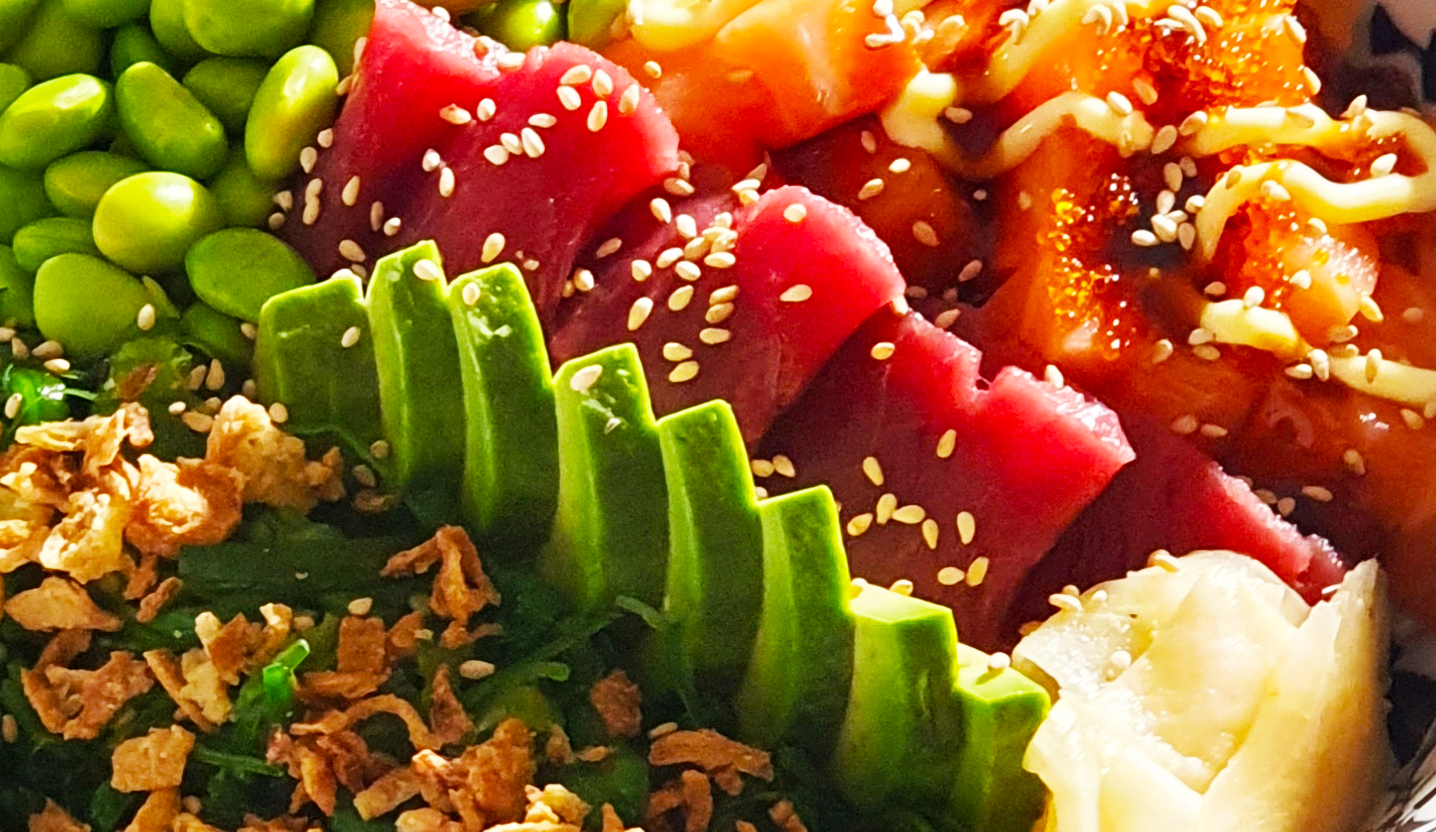Katsuobushi slices of dried and smoked tuna fish
To understand the preciousness of this product, one must know the difficulty and timing of the processing steps.
How katsuobushi is made
The fish is beheaded, gutted and filleted. Bellies, the fattest part of the fish, do not lend themselves to preservation, so they are discarded. The fillets are then placed in a pot in boiling salted water for an hour and a half, depending on size. The bones are removed when the fillets are cooked, then smoked using oak, pasania or Castanopsis wood.
This process can take up to a month: fillets are smoked for 5-6 hours in one session, allowed to rest for a day to dry condensation, then cleaned and smoked again the next day, repeating this cycle of smoking and resting 12-15 times. The outer film formed by the smoke is cleaned from the surface using a grinder.
At this stage the fillets are called aragatsuo and are commonly found in stores “shaved” and packaged for sale under the name Katsuo-kezuri-Bushi or hanakatsuo. That’s not true
katsuobushi
Without the last stage of fermentation.
The last stage of creating the real
katsuobushi
is to allow the dried fish fillet to finish seasoning with the help of a special mold. Fillets are sprayed with an Aspergillus Glauco culture and closed for 2 weeks in a growing room. The mold ferments the fillets and they absorb any residual moisture.
The fillet that has become hard is continuously scraped off its surface, and periodically put to complete sun-drying until it resembles a piece of wood, with less than 20 percent of its initial weight.
By definition, only fillets that have been treated in this way can be referred to as a
katsuobushi
. However, after repeating this process of mold growth and sun-drying at least twice, katsuobushi can also be called karebushi, while fillets that have repeated this process more than three times can be called honkarebushi.
When the process is complete, the fillet is “tuned,” tapped with a wooden mallet, and the sound produced, almost metallic, their matte beige outer appearance, determines their level of quality. When cut, a deep ruby-red translucent color appears.
Some special selections of honkarebushi reach drying processes of more than two years




